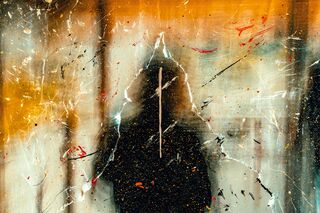Personality
Face Your Shadow to Grow Beyond Your Personality Type
Every personality type has opportunity to grow in facing and integrating shadow.
Posted August 15, 2022 Reviewed by Davia Sills

Descriptions of many personality typologies revolve around characteristic patterns of relating to ourselves and others. As examples, both Jungian typology and the Enneagram incorporate psychodynamic conceptions of the unconscious, including the shadow, which must be faced and integrated to become a fully formed and optimally functioning person.
Repression and the shadow
Scottish physician William Cullen coined the term “neurosis” in 1769, which Sigmund Freud (1915, 1923) popularized in describing formations of patterns of behavior, thoughts, dreams, emotions, and bodily symptoms which form in response to the psychodynamic he called “repression.” According to Freud, our lives are filled with such patterns.
Freud’s student, Carl Jung, expanded on these ideas about the unconscious by developing his own theory of what he called “shadow,” essentially the unconscious personal collective of repressed aspects of a person.
Freud’s and Jung’s models are classified as “psychodynamic” due to notions of mind-based dynamics. When a person thinks, feels, or behaves one way due to an individual or social acceptability or pressure, there are often other parts of one’s mind that are driven toward or desirous of something altogether different; in the least, there are interacting, unconscious forces.
Shadow is revealed indirectly through projection, when one’s own qualities are perceived in another person, sometimes through experiences of conflict or repulsion. While this does not mean that any rejection of another’s characteristics is evidence of projection—certainly not—when projection occurs, it will often involve the rejection of another’s characteristics.

The role of shadow in personality
In the realities of lived experience, this is almost never clear or clear-cut. These experiences, very often constituted as interpersonal reactions, may only be dimly suspected in a subjectively felt sense and may be perceived rightly as qualities in the other, even while they are perceived at all most likely due to one’s unconscious identification with them.
Jung (1959) wrote, “No one can become conscious of the shadow without considerable moral effort. To become conscious of it involves recognizing the dark aspect of the personality as present and real.” By “dark,” Jung referenced the metaphor of darkness and light, with light being what is visible and dark being what is not clearly visible. In other words, what is shadowed is difficult to see and understand, not primarily due to being encrypted or riddled but simply due to being invisible.
It is difficult, but the process of grappling with the less socially desirable aspects of ourselves is the only way to see ourselves more fully and, therefore, more clearly; facing our shadows is, in this way, the key to improving the way we experience ourselves and show up in the world.

The role of the shadow in self-regulating type
Psychoanalytic and Enneagram theories agree that personality types are relatively stable because of self-regulating dynamics, which may be prompted, as described by psychologist David Shapiro (1999), “by anxiety or shame or some other acute discomfort, to sensations or kinds of awareness of the self that threaten its stability.”
A brief look at the Enneagram Type One may help illustrate this. The Type One is closely aligned with the psychoanalytic concept of the superego. Type Ones are compelled to be good, and not only good but right. Right is equated with good for the Type One, who collects principles and rules which are valued over instinct or intuition. These individuals are famously conscientious and infamously critically minded.
Enneagram guru Beatrice Chestnut (2013) has described that when a Type One experiences a psychological impulse, “It moves up from the gut and through the body before being intercepted and judged by a well-developed critical function in the mind. If the impulse fails the inspection, the One’s critical thinking function labels the impulse ‘wrong’ and represses it.”
Chestnut added that if such an impulse is self-judged to be morally unacceptable, “it can trigger ‘reaction formation,’ a defense mechanism in which the One pushes the original impulse down hard into the unconscious through automatic generation and expression of the opposite impulse.” Avoiding fault is a relentless critical function for Type Ones, and a One may feel resentment toward someone with “rule-breaking” or self-indulgent behavior. Then, as Chestnut explained, “The One’s perception that being a resentful person is itself ‘wrong’ or ‘bad’ encloses the personality in a cycle of judgment and anger, of reaction and often, regret.”
Transcending type, increasing authenticity
Are nine pigeon holes the ideal number, or is any typological box too small to contain a fully formed person? What is noteworthy here in a discussion of shadow are not the descriptive qualities of Type Ones or of any of the other eight Enneagram types or any of the Jungian archetypes, but rather the manner in which these types are maintained within a person; they are maintained by the gravitational pull of shadow within the self-regulation of personality type, a force ever resisting authentic personality.

Personality types—regardless of typology—are maintained by varying versions of the same basic self-regulating dynamic corrective mental processes. And each type faces distinctive yet similar challenges in coming to understand and integrate shadow with the whole self in order to achieve an optimal experience of authenticity as a person, a process involving not only integrating personality within the range of one’s type but achieving increasing transcendence beyond type as one integrates repressed or otherwise shadowed aspects of personality.
References
Chestnut, B. (2013). The complete Enneagram: 27 paths to greater self-knowledge. Berkeley, CA: She Writes Press.
Freud, S. (1915). Repression. SE 14:141-158.
Freud, S. (1917/1920). Vorlesungen zur einführung in die psychoanalyse (Introductory lectures on psychoanalysis), translated by G. Stanley Hall in 1920 as, A general introduction to psychoanalysis. New York: Boni & Liveright.
Freud, S. (1923). The ego and the id. In J. Strachey et al. (Trans.), The standard edition of the complete psychological works of Sigmund Freud, Volume XIX. London: Hogarth Press.
Jung, C. G. (1959). Aion: Researches into the phenomenology of the self. In Read, H., Fordham, M., & Adler, G. (Eds.), Collected works (R. F. C. Hull, Trans.). Princeton: Princeton University Press, Bollingen Series XX.
Shapiro, D. (1989). Psychotherapy of neurotic character. New York, NY: Basic Books.




